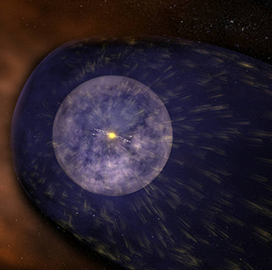Poland's science ministry will build a new space mapping technology for NASA under an agreement between the two organizations and a larger effort to study the sun's heliosphere.
Poland will develop the Global Solar Wind Structure instrument that would gather data on hydrogen from solar wind and interstellar space, NASA said Thursday. GLOWS' function will support the U.S. space agency's Interstellar Mapping and Acceleration Probe (IMAP) that aims to assess and map the sun's heliosphere.
IMAP also seeks to observe the interaction between the solar heliosphere and neighboring galaxies. David J. McComas, a Princeton University professor who serves as IMAP's principal investigator, will lead a party of 24 international institutions for the effort.
NASA launched IMAP as the fifth entry in the space agency's Solar Terrestrial Probes program managed within Goddard Space Flight Center.





